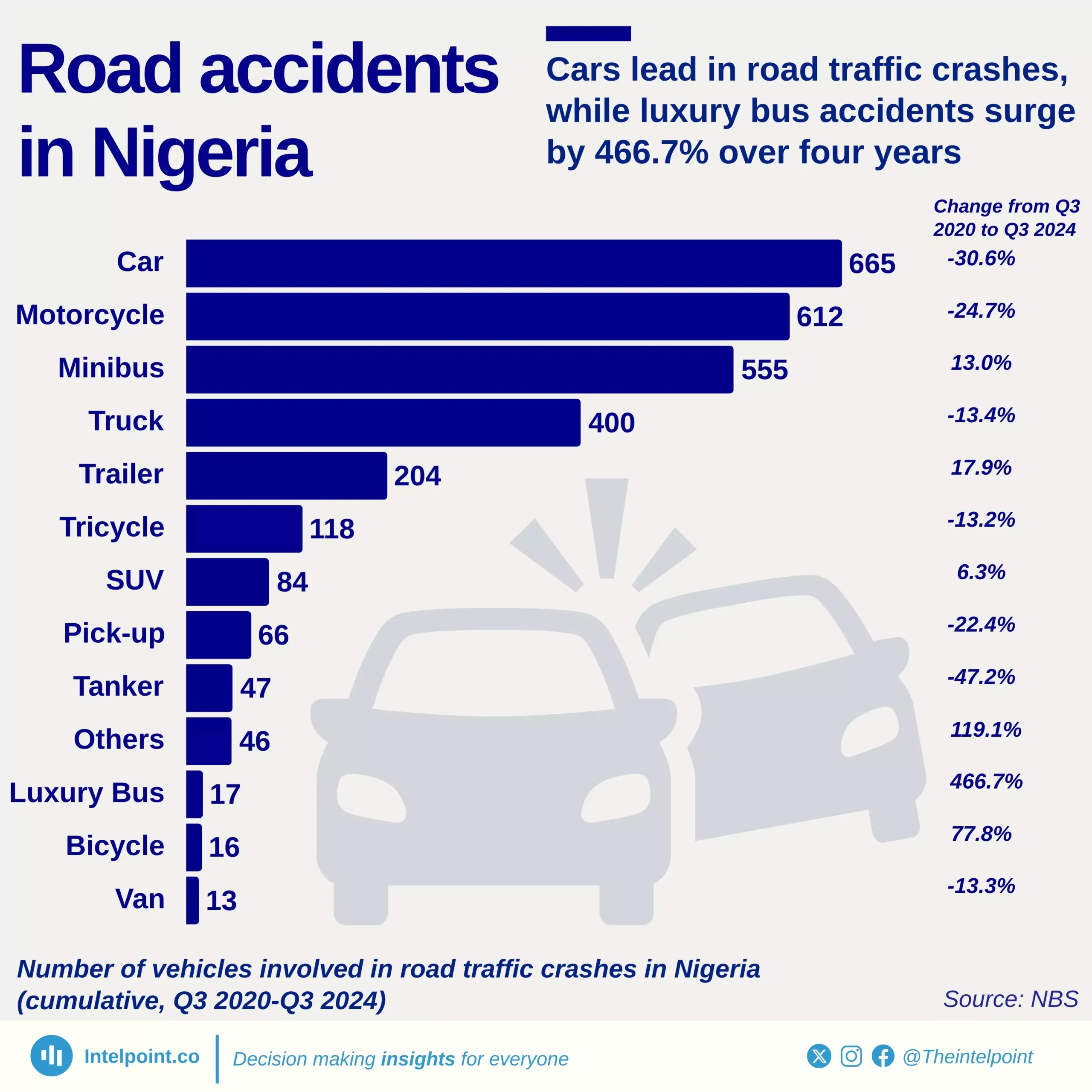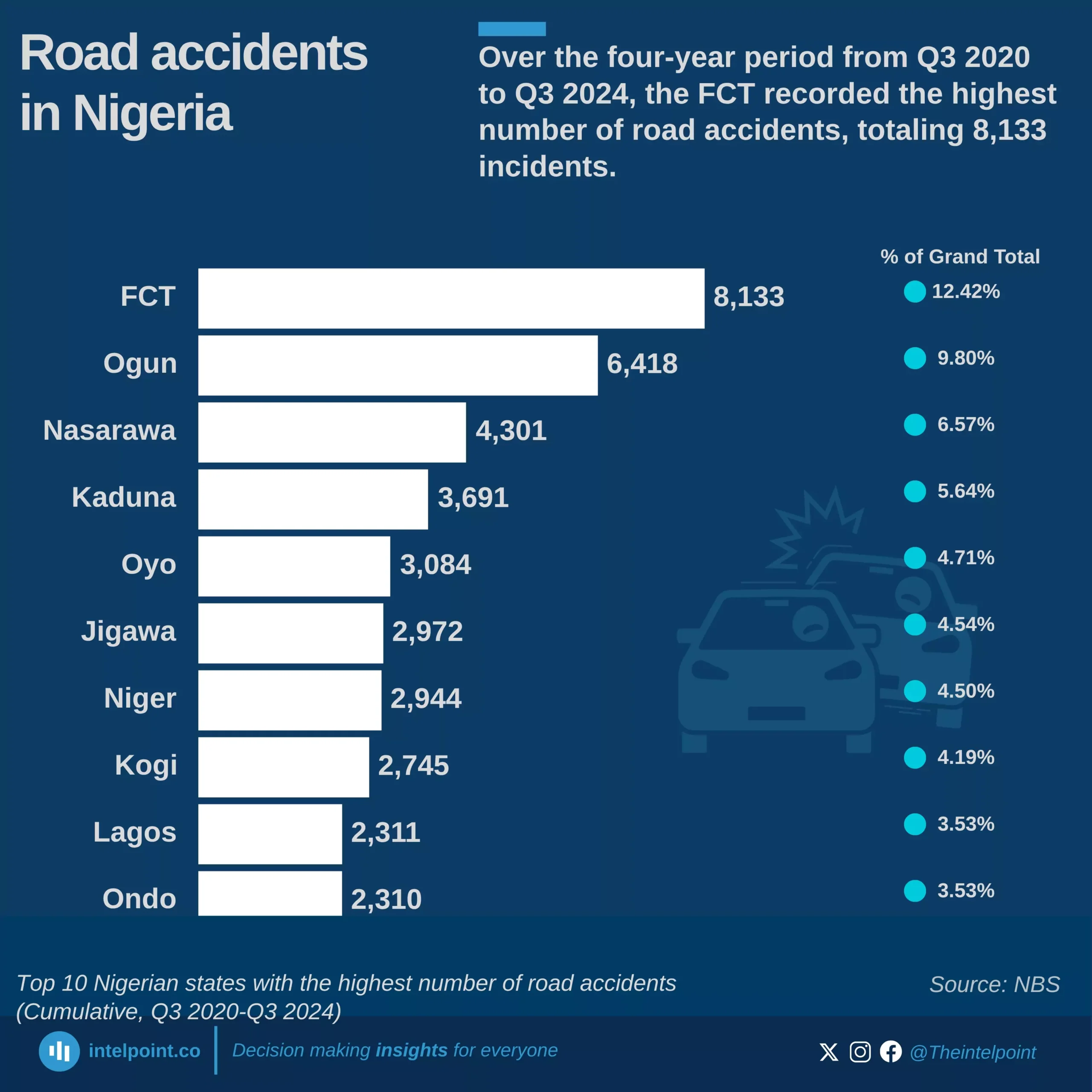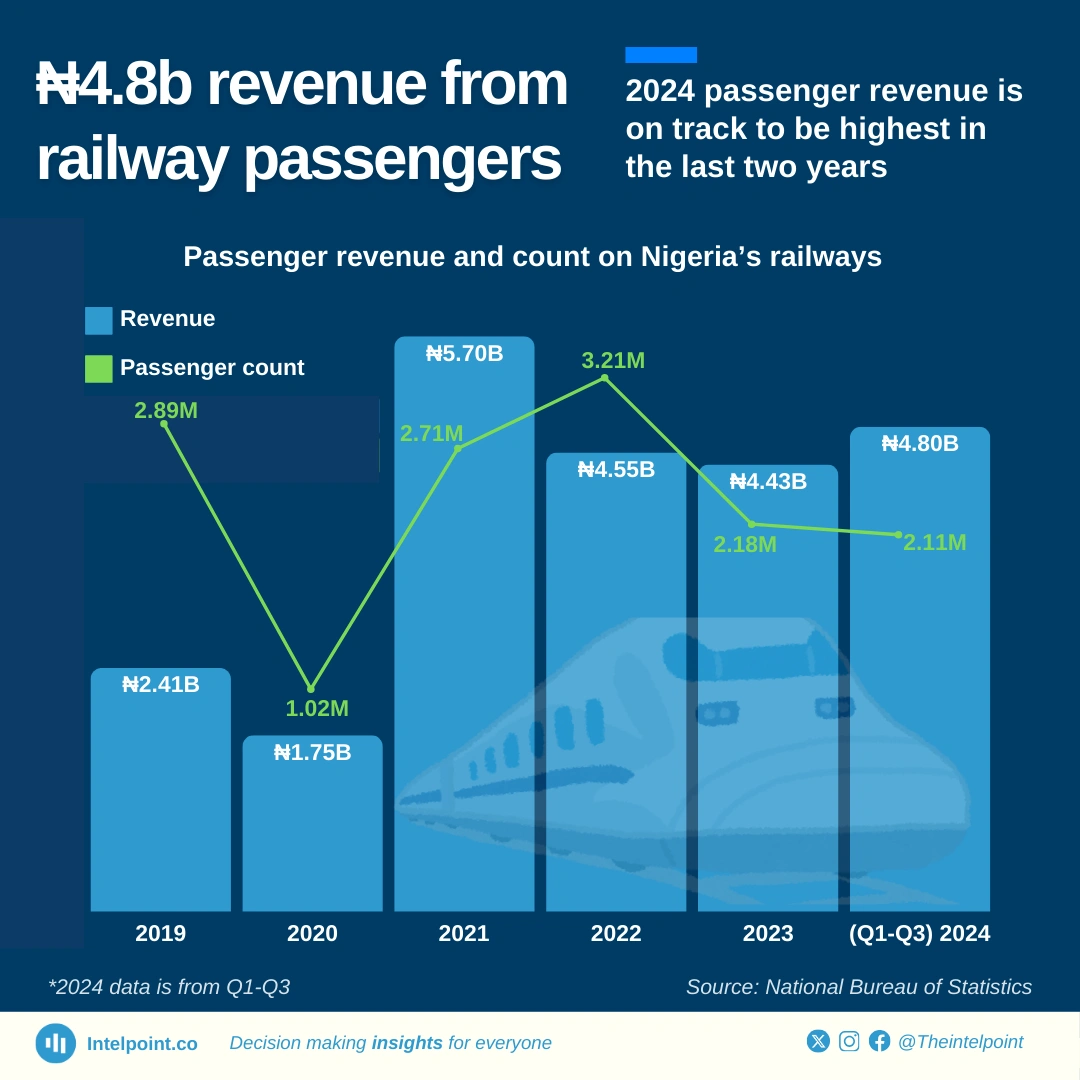Nigeria’s railway earnings rely heavily on passenger services, which bring in over three-fifths of total revenue. Goods and cargo remain a secondary but significant source, while pipeline usage underscores the sector’s broader transport role. Other income sources are negligible, reflecting limited additional revenue streams. The figures for Q1–Q3 2024 highlight how pivotal passenger fares are to the system’s bottom line. However, the moderate contribution from freight and pipelines signals potential for revenue diversification. Investing in these areas could reduce dependence on passenger travel and strengthen the railway’s overall financial health.

FCT, Ogun, and Nasarawa consistently rank as the top three states with the highest number of road accidents.
The FCT recorded its peak accident figures in 2022, particularly in Q2 (842 cases) and Q4 (864 cases).
In Q2 and Q3 of 2024, Ogun State surpassed the FCT in the number of reported accidents.
Across these three states, there has been a notable decline in accident numbers, with an average decrease of approximately 37.6% between Q2 and Q3 2024.




